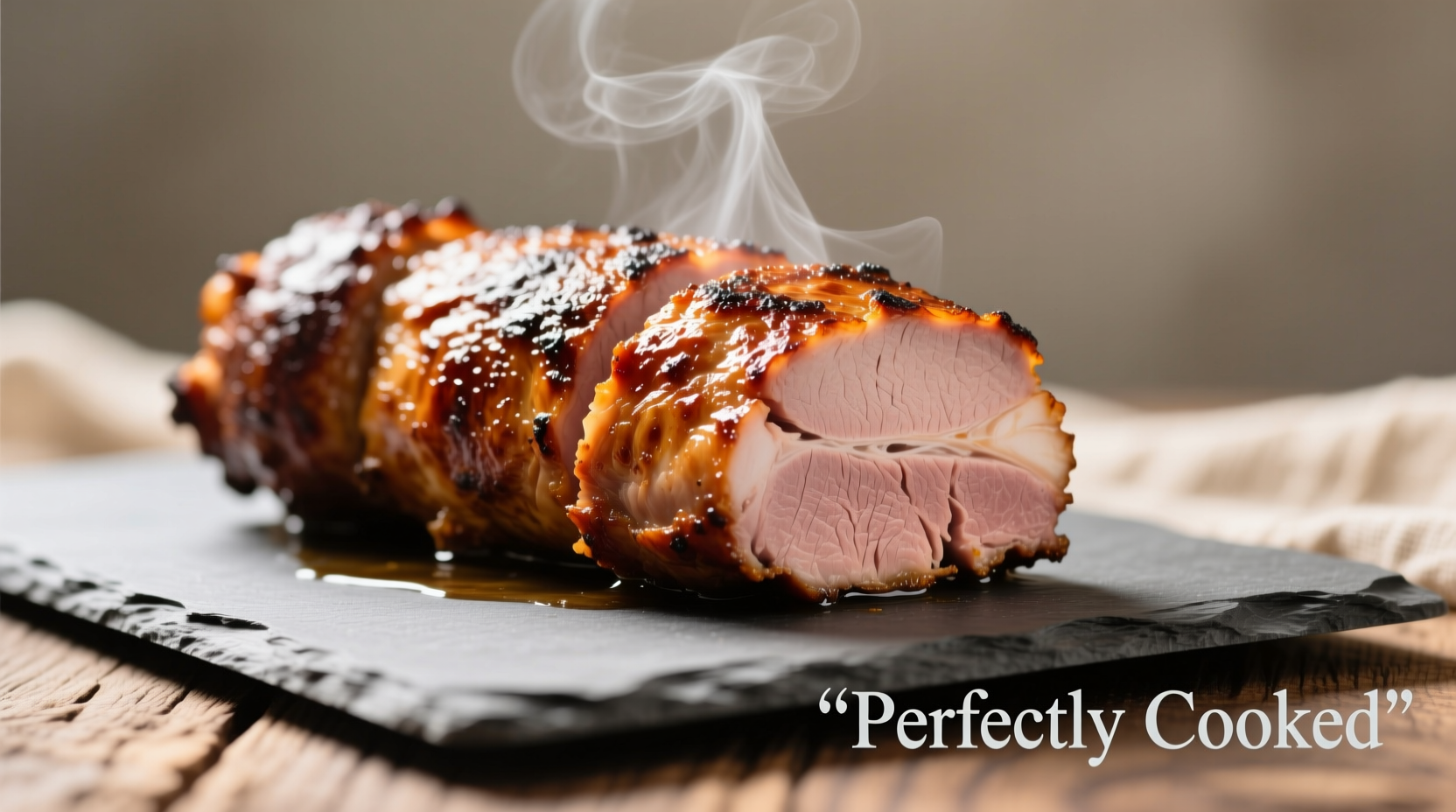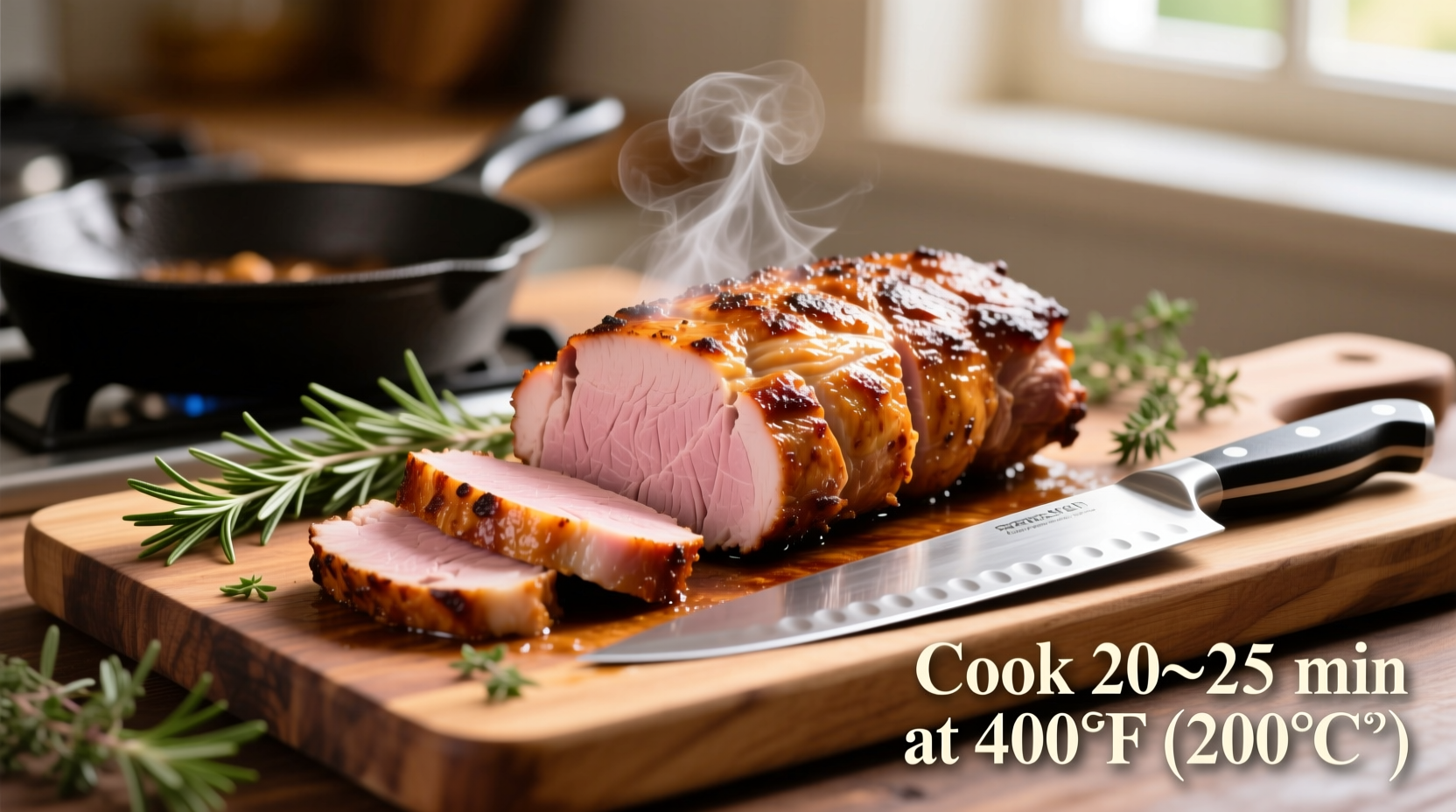The Complete Guide to Perfectly Cooked Pork Tenderloin
Nothing beats a perfectly cooked pork tenderloin—tender, juicy, and full of flavor. But getting that ideal result requires understanding the right timing, temperature, and technique. Whether you're a beginner cook or looking to refine your skills, this guide provides everything you need to achieve restaurant-quality pork tenderloin every time.
Why Timing Matters for Pork Tenderloin
Pork tenderloin is one of the leanest cuts of pork, which means it cooks quickly but can easily become dry if overcooked. Unlike larger cuts, tenderloin doesn't have much fat to keep it moist, so precise timing is crucial. The USDA Food Safety and Inspection Service recommends cooking pork to a minimum internal temperature of 145°F (63°C), followed by a 3-minute rest period. This temperature ensures food safety while maintaining optimal juiciness.
Factors That Affect Cooking Time
Several variables impact how long your pork tenderloin needs to cook:
- Starting temperature: Cold meat from the refrigerator takes longer than meat brought to room temperature
- Thickness: Thicker cuts require more time than thinner ones
- Cooking method: Oven roasting, stovetop searing, or grilling each have different timing
- Oven accuracy: Actual oven temperature can vary by 25°F or more
- Rack position: Middle rack provides most even cooking
| Cooking Method | Temperature | Approximate Time | Internal Temp Target |
|---|---|---|---|
| Oven Roasting | 400°F (204°C) | 20-25 minutes | 140-145°F (60-63°C) |
| Stovetop Searing + Oven Finish | 425°F (218°C) | 15-20 minutes | 140-145°F (60-63°C) |
| Grilling | Medium-high heat | 15-20 minutes | 140-145°F (60-63°C) |
| Sous Vide | 140°F (60°C) | 1-2 hours | 140°F (60°C) |
The Most Reliable Method: Temperature Over Time
While timing guidelines are helpful, the only foolproof way to know when your pork tenderloin is done is by using an instant-read thermometer. Relying solely on cooking time can lead to undercooked or dried-out meat because of the variables mentioned earlier.
Professional chefs and food scientists agree that temperature monitoring is essential. According to research from the USDA Food Safety and Inspection Service, pork is safe to eat at 145°F with a 3-minute rest period, which allows the temperature to rise slightly while the meat relaxes.
Step-by-Step Cooking Process
Preparation (5 minutes)
Remove the tenderloin from the refrigerator 30 minutes before cooking. Pat it completely dry with paper towels—this crucial step ensures proper searing. Trim any excess fat or silver skin using a sharp knife.
Seasoning (2 minutes)
Season generously with salt and pepper. For enhanced flavor, consider a simple rub of garlic powder, onion powder, and dried thyme. Avoid sugary rubs if you'll be searing, as sugar can burn at high temperatures.
Cooking (20-25 minutes)
For oven roasting (the most foolproof method):
- Preheat oven to 400°F (204°C)
- Heat an oven-safe skillet over medium-high heat
- Sear tenderloin on all sides until golden brown (about 2 minutes per side)
- Transfer skillet to oven and cook until internal temperature reaches 140°F
- Remove from oven—the temperature will continue rising to 145°F during resting
The Critical Resting Period
Never skip the resting period! When pork tenderloin comes out of the oven, the muscle fibers are tight and need time to relax. During this 5-10 minute rest:
- Juices redistribute throughout the meat
- Internal temperature rises 5-10 degrees (carryover cooking)
- Texture becomes more tender
Cover loosely with foil to retain heat but prevent steaming, which would soften the crust. Cutting too soon causes precious juices to escape onto your cutting board rather than staying in the meat.

Troubleshooting Common Issues
Dry or Tough Pork
This usually happens when the tenderloin is overcooked. Remember that carryover cooking continues after removal from heat. Pull the meat at 140°F rather than waiting for 145°F. Also ensure you're not skipping the resting period.
Uneven Cooking
If one end is thicker than the other, tuck the thinner end under or use the "butterflying" technique to create more uniform thickness. This ensures even cooking throughout the cut.
Lack of Flavor
Pork tenderloin is mild by nature. Enhance flavor with:
- Aromatics like garlic, rosemary, or thyme in the roasting pan
- A simple pan sauce made from the fond (browned bits in the pan)
- Finishing with a squeeze of fresh citrus
Advanced Tips for Perfect Results
Temperature monitoring: Insert your thermometer into the thickest part of the tenderloin, avoiding any fat pockets.
Cooking with a thermometer in place: For oven roasting, leave an oven-safe thermometer in the meat to monitor temperature without opening the oven door.
Brining option: For extra insurance against dryness, brine the tenderloin in a solution of 4 cups water, 1/4 cup salt, and 2 tablespoons sugar for 1-4 hours before cooking.
Searing first: Always sear before oven finishing for maximum flavor development through the Maillard reaction.
How to Store and Reheat Leftovers
Store cooked pork tenderloin in an airtight container in the refrigerator for up to 3-4 days. When reheating:
- Slice and warm gently in a covered skillet with a splash of broth
- Microwave at 50% power with a damp paper towel to prevent drying
- Never reheat to above 140°F to maintain tenderness











 浙公网安备
33010002000092号
浙公网安备
33010002000092号 浙B2-20120091-4
浙B2-20120091-4